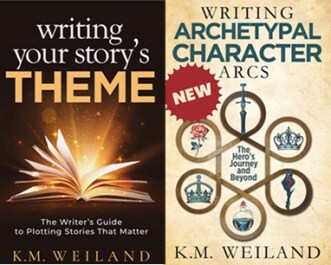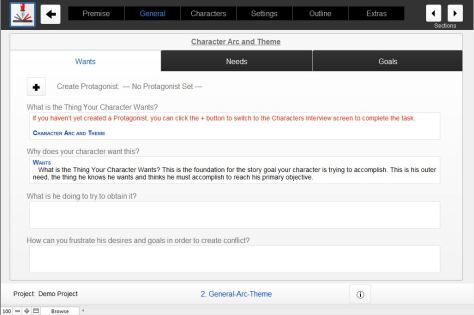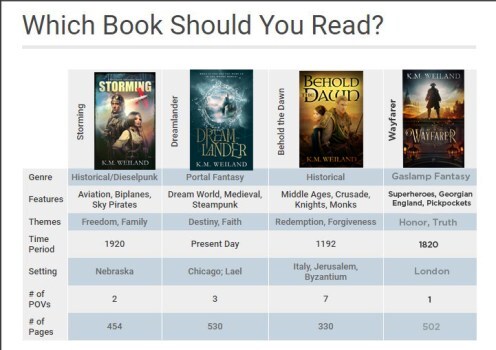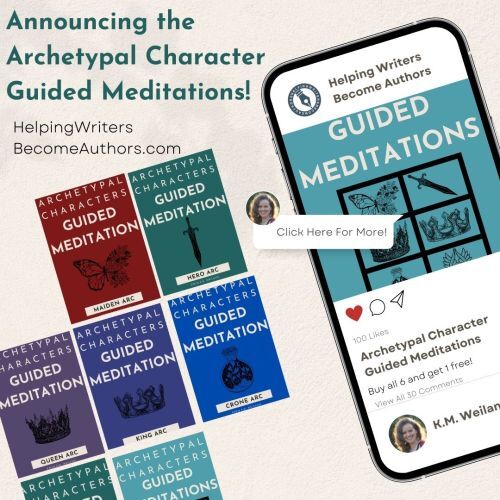K.M. Weiland's Blog, page 11
November 20, 2023
Happy Thanksgiving, Wordplayers!
Hey, Wordplayers!
This Thursday is Thanksgiving in the U.S. It’s also the last day of the month-long writing retreat I gave myself in the beautiful Berkshires. I am sharing the holiday with my youngest brother, then the follow day I’m flying back home (wish me luck with the holiday traffic!).
This is just a note to say thank you.
First, thank you to New England! Thank you for a beautiful month, full of beauty and history. I will be remembering your gifts forever.
View this post on Instagram
A post shared by KM Weiland (@authorkmweiland)
I’m thankful for you. Maybe I know your name, maybe I don’t. Maybe we’ve shared a conversation via email or the comments on my blog. Or maybe you’re one of the many who read or listen in companionable silence. Whoever you are, I am grateful to have you in my life.
I’m grateful for your attention and your encouragement. I’m grateful for those who have purchased books or supported me on Patreon. I’m grateful for all these things. But as the years go by, what I am grateful for more and more is simply that I get to talk to you, that I get to share my thoughts, my ideas, my quirky passion projects (like the Archetypal Character Guided Meditations—I seriously had no idea if that was going to fly!).
You are the ones, more than anyone else, who have taught me that each person has something important to contribute to this life. As writers, I think we understand this (or at least want to understand it) more than just about anyone. Our gift is that we have something to say.
And so, again, I thank you at the end of other year for listening to what I have to say. And I thank you, too, with all my heart for what it is you are here on this earth to say. Keep saying it. Keep writing it.
Cheers and happy Thanksgiving!

***
P.S. Only a few days left on my Black Friday sale: 25% off every product in my store, including my books, workbooks, courses, software, and writing meditations. (And if you should happen to have a question on Black Friday itself, please grant me your patience while I’m traveling. Rest assured, I will get back to you as soon as I’m home.)
The post Happy Thanksgiving, Wordplayers! appeared first on Helping Writers Become Authors.
November 13, 2023
25% Off All Books, Courses, Software, and Meditations for Black Friday
This holiday season, I am doing something I’ve never done for Black Friday before. I’m offering 25% off every product I’ve ever created! This means that for a limited time (November 13-27th), you can grab every book and product I sell here on my site at this special holiday price. The discount has already been applied sitewide, so no need to worry about coupons.
The sale starts out with my writing books on plot, character, and story structure (and more!). Then you can take it a step further with interactive workbooks (including the Outlining Your Novel Workbook software) that can turn your knowledge into practical skills. Dive deep into character development with the Creating Character Arcs Course, and don’t miss my brand-new Archetypal Character Guided Meditations for delving into your characters’ minds and dreaming up new story ideas.
Plus, you can grab all my novels and even the full-cast audio dramatization of my gaslamp fantasy Wayfarer (which is not available on my site but via the producer here and requires the code BLACKFRIDAY).
Please note that I only sell digital products on my site (e-books, etc.). However, if you’re interested in paperback versions of my books, those are available on Amazon.
Whether you’re a budding writer or a seasoned wordsmith or just in search of a good read, it is my hope and intention that these tools will enhance your storytelling prowess. Or maybe they’ll just help you figure out what to get your writing buddies for Christmas. 
You can find more details about the products below, and if you’re still not finding what you’re needing right now in your writing journey, keep scrolling for seasonal offerings from other writing brands.
25% Off My Full Arsenal of Writing ResourcesUnlock the secrets of exceptional storytelling with this extensive suite of writing tools and resources, which I’ve spent the last 15 years designing to help you refine your craft and bring your creative vision to life.
Writing Books: Dive into my acclaimed guides, including Outlining Your Novel, Structuring Your Novel, Creating Character Arcs, Writing Your Story’s Theme, and Writing Archetypal Character Arcs for insights into plot development, character creation, and story structure.
Workbooks: Take what you learn to the next level with the interactive workbooks Outlining Your Novel Workbook, Structuring Your Novel Workbook, and Creating Character Arcs Workbook. These practical companions empower you to apply your insights directly to your work, ensuring you can turn your knowledge into tangible skills.
Outlining Software: Use the Outlining Your Novel Workbook software to streamline your writing process, organize your thoughts, plan your plot, and track character development.
Character Arcs Course: Character development is paramount, and the six-hour Creating Character Arcs Course can help you create dynamic, relatable characters. You’ll learn to craft authentic character arcs that will resonate with readers and make your stories unforgettable.
Archetypal Character Guided Meditations: Take a unique journey into your characters’ minds with my latest offering—six Archetypal Character Guided Meditations based on my book Writing Archetypal Character Arcs. Bring unparalleled depth to your writing by gaining deep insights into your characters’ motivations, desires, and fears.
Novels: Embark on journeys through time and imagination with my historical and fantasy novels Behold the Dawn, Dreamlander, Storming, and Wayfarer. (The full-cast audio dramatization of Wayfarer is also 25% off here with the code BLACKFRIDAY.) Adventure awaits!
Transform your storytelling abilities, captivate your readers, and make your mark in the world of writing! Happy Thanksgiving, everyone!
More Black Friday Deals!I’m participating in a joint promotion for deals on writing programs, courses, and more from around the Internet. Following, you can find dozens more seasonal deals for writers. Please make note of the dates, as not all of these sales are live at the same time.
Note: These are not personal recommendations, and I do not have personal experience with all of these products and companies. If you have questions about any of the below offerings, it is best to directly query the particular site for further information.
ProWritingAid: 50% offDates: Nov. 13–29
ProWritingAid gives you clear, easy steps to improve your writing so you can share your stories and ideas with confidence. What sets ProWritingAid apart from other writing software is that it offers world-class grammar and style checking combined with more in-depth reports to help you strengthen your writing. If you are serious about writing, then this is the grammar and style checker for you.
Fictionary: 40% offDates: Nov. 15–24
Fictionary StoryTeller is a creative editing software for fiction writers and editors that makes editing easier by applying universal storytelling structures to each and every scene. Evaluate and revise your manuscript against thirty-eight Fictionary Story Elements to tell a powerful story that readers will naturally connect with.
The Novel Factory: 30% offDates: Nov. 15–Nov. 24
The Novel Factory is the ultimate novel writing software and includes character development tools, plot templates, target tracking, and so much more. Developed by author Katja Kaine, the software includes a wealth of writing advice, which helps new writers master the craft and more established writers hone and perfect their skills. So many writers have said it has changed their writing lives, allowing them to achieve goals they had been struggling with for years. It’s completely free to try for 30 days, so why not see if it lives up to the hype?
The Anatomy of Prose and Villains Masterclasses: 30% off with code BLACKFRIDAY30Dates: Nov. 20–Dec. 3
Do you want to improve your prose, characters, or storytelling? Join rebel author, podcaster, and bestselling author Sacha Black for her writing classes, books, and audiobooks.
Women in Publishing Summit: $25 off the early bird pricing with code BLACKFRIDAYDates: Nov. 1–30
The largest virtual summit designed to support women in the publishing industry. Authors, editors, publishers, book marketers, etc., come together to build community, network, learn together, and support each other.
One Stop for Writers: 40% offDates: Nov. 15–30
Ready for a game-changer? One Stop for Writers is the creativity partner you’ve dreamed of, containing an arsenal of ground-breaking tools that can help you level up your fiction. Whether you want to build memorable characters, stunning worlds, or fresh, engaging plots, One Stop has resources that demystify storytelling so you can write stronger stories much more easily. And if you need step-by-step guidance, our new Storyteller’s Roadmap is your GPS for planning, writing, and revising your way to a bestselling novel. Expert help without the high costs of story coaching… it’s time to get your book to the finish line. Writing can be easier… and with One Stop, it will be!
First Editing: 21% OffDates: Nov. 25–Dec. 5
FirstEditing’s professional editors manually correct and perfect your every word so you can publish confidently and successfully. FirstEditing is unique because it vets, trains, and certifies expert editors with publishing experience to coach you. Over 50,000 authors since 1994 have entrusted FirstEditing with their manuscripts. After completing your self-edit, be sure you are ready to distribute publicly. Get an expert editor in your genre to personally edit your writing, revise your syntax, and advise you how to structurally strengthen your English presentation.
Shut Up and Write the Book by Jenna Moreci: 50% OffDates: Nov. 24–Dec. 1
A step-by-step guide to crafting your novel from plan to print, written by award-winning author and YouTube sensation Jenna Moreci.
Write|Publish|Sell: 4 Workshops for $10 with code BLACKFRIDAYDates: Nov. 1–30
We’re celebrating 10 years in the business of supporting authors with a bundle of 4 of our most popular book marketing workshops for ONLY $10!
Book Funnel: $50 OffDates: Nov. 1–30
BookFunnel is the premier software service for authors. Whether it’s delivering your reader magnet or ARCs, finding great ways to promote and swap books with other authors, or doing direct sales and Kickstarter fulfillment, BookFunnel is the essential tool for your author business.
Atticus – Book Writing and Formatting Software: Free Course With PurchaseDates: Nov. 22-27
Create professional print books and e-books easily with the all-in-one book writing software.
Scribophile Premium Membership: 30% OffDates: Nov. 1–30
Scribophile is one of the web’s largest online writing communities and workshops. Writers of all skill levels join to make friends, finish their novels, help each other improve, take writing classes, and meet beta readers.
PublishDrive: 12 Months FreeDates: Nov. 1–Dec. 31st
Self-publishing platform with a global reach. Easily self-publish ebooks online, audiobooks, and print books to thousands of stores worldwide. One click, publish everywhere for a flat fee.
Note: If you have any questions about any of the offerings, it is best to directly query the particular site for further information.
The post 25% Off All Books, Courses, Software, and Meditations for Black Friday appeared first on Helping Writers Become Authors.
November 6, 2023
Violence in Fiction: 6 Archetypes
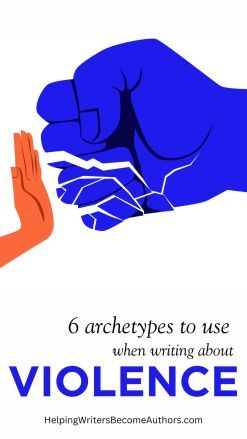 From KMW: The dictionary tells us the definition of violence is: “Behavior involving physical force intended to hurt, damage, or kill someone or something.” By that definition, we can recognize that violence in fiction is a staple. Almost every story features some example, even if it’s “just” verbal aggression. Certain genres, such as mysteries and action, find their very foundation upon violence.
From KMW: The dictionary tells us the definition of violence is: “Behavior involving physical force intended to hurt, damage, or kill someone or something.” By that definition, we can recognize that violence in fiction is a staple. Almost every story features some example, even if it’s “just” verbal aggression. Certain genres, such as mysteries and action, find their very foundation upon violence.
Naturally, this becomes a complex subject. To avoid violence in fiction altogether is impractical, if for no other reason than the fictive world soon ceases to be an accurate representation of reality. And yet, fiction is not only informed by reality, it also informs reality. Therefore, it behooves any writer using any level of violence in fiction to do so with awareness of its true implications, not just as part of a moral discussion, but also within the needs of the plot.
Today, I’m happy to share with you another thoughtful post from Usvaldo de Leon, Jr. A few years ago, I asked him to write a post based on an email conversation we had shared about the often dehumanizing portrayal of mindless violence in fiction. Today, he’s back with a breakdown of how violence functions in modern fiction and how to recognize certain archetypes of violence that might be showing up in your stories, so you can portray them with as much awareness and power as necessary.
***
In “real life,” violence is held in abeyance. It is a demon trapped in a bottle, and care must be considered before the bottle is broken; sow the wind and reap the whirlwind. For this reason, we are socialized against using it. We are taught to bury our violent impulses. “He made me so mad I could hit him,” we say, but we won’t. Once, as children, we smacked anyone who displeased us. Over time we learned to restrain ourselves.
However, an impulse repressed does not equal an impulse removed and therefore we employ and even enjoy violence in our stories. “Apology accepted, Captain Needa,” Vader says, and the incompetent underling collapses lifeless while our inner five-year-old nods admiringly.
What are we responding to when we watch violent stories? Are there archetypes of violent stories that we can use as writers? Can we respect violence as a plot element?
6 Ways Violence in Fiction Is Used Today1. Plot DeviceThe primary use of violence in fiction is as a plot device and intensifier, like using a spice. Obi-Wan does not have to die in Star Wars: he could be arrested, for example. He could be called away suddenly by Yoda. Either choice forces Luke to grow up. But his death adds spice—it livens up the scene.

Star Wars: A New Hope (1977), 20th Century Fox.
2. Plot MoverViolence moves the story along. In The Maltese Falcon, the death of Sam Spade’s partner propels him into the mystery.
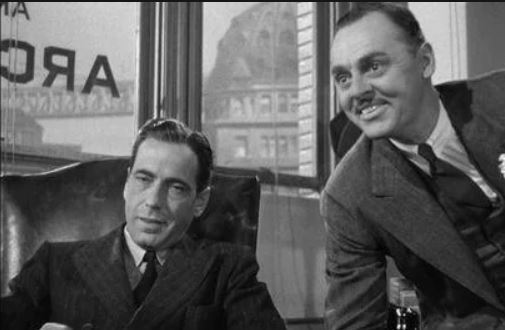
The Maltese Falcon (1941), Warner Bros.
3. Third Plot Point SymbolismAnd, of course, what would the “all is lost moment” be without the death of a character? This moment symbolizes death, and storytellers love to make it literal.
4. StakesViolence is used to communicate the stakes. In Escape From New York, Snake Plisken has twenty-four hours to find the President before tiny explosives in the blood vessels leading to his brain will explode.

Escape From New York (1981), AVCO Embassy Pictures.
If Luke doesn’t stop the Death Star, it will destroy the Rebel base, dooming the galaxy to the Evil Empire.

Star Wars: A New Hope (1977), 20th Century Fox.
In Kill Bill Vol. 1, to face her nemesis O Ren Ishii, The Bride must first kill O Ren’s personal army of 88 sword wielding yakuza assassins.

Kill Bill, Vol. 1 (2003), Miramax Films.
5. ConflictViolence can also be used for conflict. In The Graduate, to rescue Elaine from her wedding, Benjamin Braddock literally has to fight off the wedding party and guests like they were a zombie horde. If everyone had calmly discussed the situation in order to resolve it peacefully, well, where’s the fun in that?
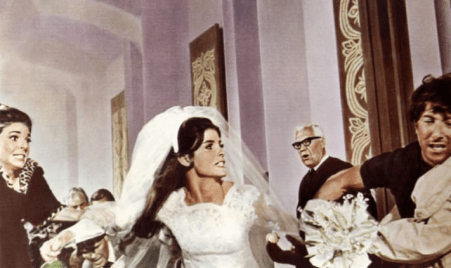
The Graduate (1967), Embassy Pictures.
6. CatharsisFinally, violence in story can be a release. The characters are not bound by social conventions; if someone is preventing them from achieving their goal, they are free to do them bodily harm. As audience members, we are often pleased to witness others do things we would not allow ourselves to do. In High Fidelity, when the insufferable Ian Raymond steals Rob Gordon’s girlfriend, he lashes out, dispensing the beat down the character so richly deserves for a satisfying laugh for the audience.

High Fidelity (2000), Touchstone Pictures.
3 Polarities of Violence in FictionViolence in story occupies three axes:
1. Authorized or UnauthorizedAuthorization refers to the role of the character. A police officer is authorized to use violence in the course of duty; so, too, in a different way, is a mob hitman.
2. Justified or UnjustifiedJustification refers to just that: was the killer justified in the use of violence? In a typical story, the violence deployed by the main character will be justified and that of the antagonist will be unjustified, but not always. In Red River, for example, Thomas Dunson is never justified in his violence and it is a crucial clue for how the story develops.

Red River (1948), United Artists.
3. Orderly or ChaoticOrder or chaos refers to how the violence affects the story world. When the policeman in a story shoots the serial killer, that is restoring order. When the Joker in The Dark Knight Rises plants bombs on two ferries and tells them to blow each other up, it is an attempt to devolve Gotham to a base chaotic state.

Using this system, we can identify six possible archetypes through which violence in fiction may portrayed. Let us look at each of the archetypes.
Archetype #1: The Policeman (Justified/Authorized/Orderly)The Policeman is most concerned with order. When chaos is introduced into the story world, it is the Policeman’s job to restore order to the world. In Dirty Harry, chaos is a serial killer stalking the streets of San Francisco.
However, the desire for order is not limited to law enforcement. In Batman Begins the Policeman is Ra’s Al Ghul. Consider that the League Of Shadows has acted as a check on human corruption and decadence for centuries. Therefore, the actions Ra’s takes are “authorized.” Gotham is depicted as a city collapsing under its own corruption, making these actions are “justified.” The end of Gotham will allow a better, cleaner city to arise. Therefore the actions are “orderly.”
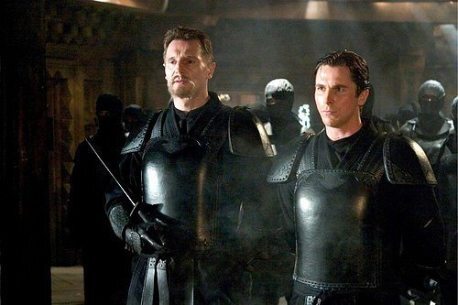
Batman Begins (2005), Warner Bros.
Archetype #2: The Avenger (Justified/Unauthorized/Orderly)The Avenger is most concerned with justification. For example, the bad guy has murdered someone close to the Avenger, and the Avenger has the ability to settle the score, returning to a semblance of “order.” The only difference between the Policeman and the Avenger is that one is “authorized” and the other is “unauthorized.”
These archetypes are slippery. It is possible for someone to begin a story as a Policeman and then to lose their authorization, turning into an Avenger. Beverly Hills Cop is one such story. Axel Foley is literally a Policeman, but when Foley’s friend is murdered, Foley’s captain will not sanction an investigation. Foley heads west to his friend’s home area as an Avenger.
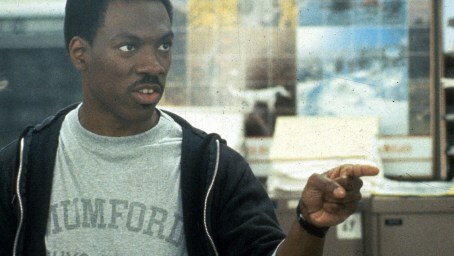
Beverly Hills Cop (1984), Paramount Pictures.
Archetype #3: The Outlaw (Justified/Unauthorized/Chaotic)The Outlaw is not interested in returning the world to its previous state. They are most most concerned with chaos. They seek to push the limits of the world—to change it. In Batman Begins, it is Batman who is the Outlaw, fighting the brutal order Ra’s Al Ghul seeks to impose.

Batman Begins (2005), Warner Bros.
Archetype #4: The Warrior (Justified/Authorized/Chaotic)The Warrior seeks to destroy until the enemy is subdued or wiped out. The deliberate act of total war in this way is naturally chaotic, as it is impossible to know what the ultimate outcome will be. As the name implies, this archetype is most often seen in war films. In the eponymously named film, John Wick starts as an Avenger, seeking revenge for his poor dog. However by the end of the first film, his scope has expanded, and he intends to destroy Viggo’s entire criminal outfit. Devolving from Avenger to Warrior is a standard story beat, as also seen in the original Get Carter and The Road to Perdition.

John Wick (2014), Summit Entertainment.
Archetype #5: The Criminal (Unjustified/Unauthorized/Orderly)The Criminal preys upon the order of the world because it is stable, predictable, and profitable. The Criminal may be on the wrong side of the line, so to speak, but they have a vested interest in preserving that line. Danny Ocean in Ocean’s 11 is a typical Criminal: if he has done his job properly, it will be as if he was never there. Any violence the Criminal engages in will be the minimum necessary to achieve the job. Heat is about a crew of professional thieves who would just as soon not be violent if possible, but when violence is necessary are ruthless in executing it.
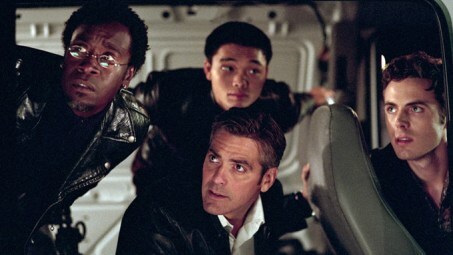
Ocean’s 11 (2001), Warner Bros.
Archetype #6: The Anarchist (Unjustified/Unauthorized/Chaotic)The Anarchist has no interest in anything but chaos. As Alfred says about The Joker in The Dark Knight, “Some men just want to watch the world burn.” The Anarchist is unauthorized, unjustified, and chaotic, and that makes them singularly terrifying because it is impossible to know exactly what they might do or why.

Violence in fiction is much like the wind blowing: the impact is not so much from the incident itself but the reaction to it. The weight of the scene is created not by the violence but by the reaction to the violence.
Humans are by nature empathy machines. As such, when someone suffers, our inclination is to suffer with them. In The Thin Red Line, when Sergeant Keck accidentally explodes a grenade, the scene becomes excruciating as he becomes weepy and delirious and calling out to his mother.

The Thin Red Line (1998), 20th Century Fox.
On the other hand, when the good guy frequently just mows down seemingly hundreds of faceless baddies, who barely get a half second for us to acknowledge their passing, this signals that the deaths are unimportant. By its very lack of importance, this suggests the violence is unnecessary. If the use of violence in fiction is enhance your story, it must be seen as necessary, even inevitable, much as The Graduate could not end without a fight.
Violence is a significant element in fiction, and its cathartic properties frequently make it necessary for a story to feel complete. But use it wisely like salt in cooking to enhance your story. Be careful not to oversalt the story and make it unappetizing.
Wordplayers, tell me your opinions! Which of these archetypes have you used to portray violence in fiction? Tell me in the comments!The post Violence in Fiction: 6 Archetypes appeared first on Helping Writers Become Authors.
October 30, 2023
“There and Back Again”: The Lord of the Rings and the Power of Despair in Fiction
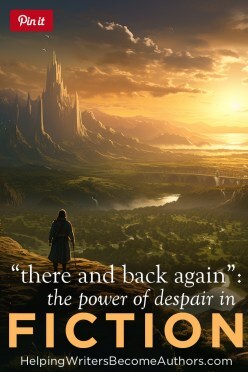 Someone asked me recently what I thought made an original story. One piece of my answer was that I don’t believe audiences so much seek original premises as original emotional experiences. We want to experience stories that evoke emotion and create catharsis. We don’t just want a comedy that makes the corner of our mouths crinkle; we want a comedy that makes us laugh so hard we’re crying and hiccupping. We don’t just want a drama that distracts us for an hour; we want a drama that keeps us thinking for weeks, months, years afterward. We don’t just want a sad story that makes us nod our heads at how awful the world can be; we want a sad story that makes us weep from the depths of our own souls. We want fiction that changes our lives. And to that end, today I want to speak about the power of despair in fiction.
Someone asked me recently what I thought made an original story. One piece of my answer was that I don’t believe audiences so much seek original premises as original emotional experiences. We want to experience stories that evoke emotion and create catharsis. We don’t just want a comedy that makes the corner of our mouths crinkle; we want a comedy that makes us laugh so hard we’re crying and hiccupping. We don’t just want a drama that distracts us for an hour; we want a drama that keeps us thinking for weeks, months, years afterward. We don’t just want a sad story that makes us nod our heads at how awful the world can be; we want a sad story that makes us weep from the depths of our own souls. We want fiction that changes our lives. And to that end, today I want to speak about the power of despair in fiction.
Why such a depressing topic? Well, first, you’ll note the title is “there and back again”!
I have spoken before about my soul-deep belief in the inherent hopefulness of the story arc, as well as the sobering power of fiction to change those who partake of it. But when I speak of “hope,” I do not speak of a fluffy, sugary ideal. The hope I speak of—the hope I have encountered and known in my own life—is grimy and blood-streaked, battle-tested and keen-eyed. This is not the hope of denial, the hope that pretends there’s nothing so very wrong after all. This is the hope that looks life in the eye, sees it to the depth of its pain and confusion, and says, “Come on.”
That’s hope. And stories are full of hope. The very arc of story itself—the promise of growth and healing—is hope. As authors, the only way we will be able to evoke that level of life-changing hope is if we are willing to embrace its opposite and to understand, equally, the power of despair in fiction.
To Offer Stories of Hope, We Must Be Willing to Reveal Despair in FictionI wrote earlier this year about shadow theory, and how a thing’s opposite is always inherent within it. There is no light without darkness; no day without night; no up without down. And so there is no hope without despair. (Indeed, what need is there for hope if there is no despair?)
In our extraordinarily complex and often bewildering world, in which we often feel so beleaguered by threats beyond our control or even consciousness, despair is a prevalent emotion. It is an emotion that needs to be explored in our fiction. As such, it is an emotion that needs to be understood and presented in relation to its powerful opposite of hope.
The topic of the importance of despair in fiction has been written on my “post idea” list for almost a year now, inspired when I read my journal entries after I rewatched The Lord of the Rings last year. I finally decided to write this post after producing the Archetypal Character Guided Meditations a few months ago. As I got deeper and deeper into creating those archetypal journeys for the Maiden, the Hero, the Queen, the King, the Crone, and the Mage, I found myself thinking, Wow! These are dark!

Archetypal Character Guided Meditations

Writing Archetypal Character Arcs (affiliate link)
As I wrote and recorded the Midpoints and Third Plot Points of so many of these archetypal journeys, I often found myself overwhelmed with emotion to the point of choking up. It was one thing to remain in the mental space of writing about the archetypal beats, as I did in my book Writing Archetypal Character Arcs, and another altogether to encounter these archetypes within the depths of the dreamzone. Particularly in exploring the King’s sacrifice and the Crone’s encounter with mortality, a part of me kept squirming and thinking, Oh, this is too much. People are going to think this is depressing!
Truly, though, that is the power of archetype—the power of story. It has the power to take us there—to the depth of our own despair, so we may see it and face it in a cathartic purge—and then take us back again—out beyond the dark night of the soul and once more into the hope of sunlight.
As Gandalf says in The Fellowship of the Ring:
It is not despair, for despair is only for those who see the end beyond all doubt.
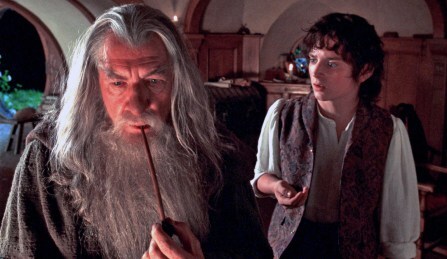
The Lord of the Rings: The Fellowship of the Ring (2001), New Line Cinema.
My Journey “There and Back Again” With The Lord of the RingsIn my own personal experience, there is no story that more potently demonstrates the archetypal power of going “there and back again” than The Lord of the Rings. For me, Lord of the Rings has become something sacred—an experience of synchronicity and blessing that I can never think about without experiencing a tremendous wave of emotion.
I didn’t read the books until after I saw the films, and I didn’t properly see the films until 2019. As a child, I wasn’t allowed to see them because they featured a “wizard.” At one point, I did see Return of the King on an international flight but didn’t connect with it and didn’t return to watch the entire trilogy for many years. In retrospect, that little issue of timing was one of the most incredible gifts of my life.
Let’s just say that 2019 was the worst year I have ever experienced. It was a year in which, for the first time in my life, I knew despair. A few years earlier, the foundations of my life had been ripped out from under me, and everything I had ever believed in started crumbling around me, like old parts falling off a jalopy. No matter what I did, I couldn’t seem to stop it from happening. By the autumn of 2019, I was approaching the one-year anniversary of what had unexpectedly turned out to be an incredibly traumatic move to a new state. I was in bad shape, with no end in sight. For the first time, I thoroughly understood why people will do just about anything to make the pain stop.
I’ve spoken about my (ongoing) healing journey before, but the first major step down that road was a coincidence so meaningful it seemed miraculous. Shortly after moving in 2018, I had purchased the complete set of Lord of the Rings movies. I had been informed that the director’s cuts were the only way to see them, so I was determined my first experience should be the longer versions. But… I just never watched them.
During that difficult summer of 2019, I started the weekly practice of driving the thirty minutes to the nearest theater, just to get myself out of the house. This particular theater offered a feature they called “throwback cinema,” in which they brought back a classic movie every weekend. That fall, they were showing Lord of the Rings. I perked up. Since I had missed seeing them in the theater during their original runs, this seemed like an amazing opportunity. My only hang-up was that I was so set on watching the director’s cuts. Turned out… they were showing the director’s cuts.
So I went. And as I sat in that dark theater watching the majesty that is this story and this adaptation, I was touched. Deeply. I was touched, above all, by the despair. By a story that got it, a story that was willing and able to go all the way into the darkness after me and pull me out. The Two Towers, in particular—the darkest of the trilogy—showed me the face of that warrior hope.
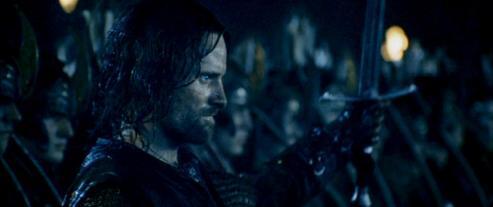
The Lord of the Rings: The Two Towers (2002), New Line Cinema.
I left the theater and wept all the way home. I had wept a lot of tears that year. But this time something was different. This time, it was catharsis. I went home that night, ate a Hardee’s hamburger (that was literally soggy with my tears), went to bed that night, and from that moment on slowly started finding my way out of my dark night of the soul.
When I rewatched the films last year, I wrote this in my journal:
I want to talk a moment about stories—and what they have meant to me. I am watching LOTR right now, and I am reliving its profound impact on me three years ago, right around this time in the fall of 2019, after that brutal, brutal summer. I am blown away—again and again and again—by the gift that was given to me in the timing of these movies being shown that fall. It feels like they were for me. How many other people who saw them that fall were changed so unutterably by them?
They are stories, fundamentally, about hope—which means they are equally about despair. And that—at the depths of my dark night—was what I was encountering. That despair felt like an evil—not because the darkness was full of monsters, but because there was no light. And so when Sam tells Frodo (after proving his own words over and over again) that “There is some good in this world, Mr. Frodo, and it’s worth fighting for”—I heard him down to the depths of my soul—because what I needed was simply a light.

The Lord of the Rings: The Two Towers (2002), New Line Cinema.
At the time, I was almost confused by the depth of my response to those words—and how healing they were—because it wasn’t as if I felt opposed by evil. I just felt lost and alone, in the dark void with nothing to light my way. It was the darkness that was my evil, and Sam told me not to give up, to keep hope, to fight for my right to see the light again.
If you do not know despair, then I do not know if you can truly understand that story. If you’re in the light, or think you are, you just sagely nod along and congratulate yourself. But if you have tasted the darkness, then you know. You know what they’re all so afraid of. You know that the darkness lives in you—cold and void—and you know you carry the burden of it every day, like Frodo, and, like everyone else, you fear its power.
And yet… hope comes again. There is light once more—when you are faithful, when you do not give up, and when you have a Sam—Tolkien himself in this instance—to tell you you are not alone and not to give up.
There is so much beauty and truth in those stories. I think perhaps their legacy has been mostly the fantasy genre itself. Probably not everyone taps the deeper gifts. But, my God, the goodness J.R.R. Tolkien left for us—out of the darkness of his own horror and despair. He was my eagle—come to save me from Mt. Doom. God bless him.
For me, the gift of LOTR is that it does indeed take you “there and back again.” It takes you into the farthest reaches of despair, but then it takes you back out. And once it has brought you back, it looks you in the eye and says, “Yes, I see you as you are, and you are right: nothing is ever quite the same again.”

The Lord of the Rings: The Return of the King (2003), New Line Cinema.
5 Ways to Tap the Sacred Power of Hope and Despair in FictionI imagine most writers would agree with me in the sentiment that not only do I long to experience fiction of such life-impacting caliber, but also that I would count it the highest honor to write a story that could, in turn, affect even one person’s life so profoundly and positively. To that end, here are five suggestions to keep in mind when seeking to tap the partnered power of hope and despair in fiction.
1. “Going There”: Be Willing to Tap the Depth of Authentic EmotionsThe first step is so simple and so obvious, and yet it is the hardest of all. Before we can make audiences feel anything, we must be willing to feel it ourselves. In order to write with authenticity, we must first be authentic with ourselves, to face the depths of ourselves where things are messy and ugly and bloody and terrifying and sometimes so, so painful. Even in sharing the most exhilarating emotions such as joy and love, we are required to access a profound level of honesty and vulnerability.
2. Don’t Squint at the DarknessThere are so many stories out there (many of them Lord of the Rings imitators) that tackle dark subjects. The darkest aspects of humanity are common fare in most stories, even comedies (an approach that can, in itself, be a powerful catharsis). The vast majority of these stories, in my experience, fall into two categories. Either they gloss over the darkness without ever truly exploring its depths or emotional effects, or they create a static experience of darkness and depression that fails to offer an equally true contrast of light and hope.
The gift of Lord of the Rings was not that it told a tale about an evil overlord with the power to blight the world into darkness. Many stories tell that tale with little to no resonance. The gift of Lord of the Rings is that it never squinted at its own darkness. Tolkien himself, as a veteran of World War I, had seen darkness. Despair was not a plot trope to him.

Tolkien (2019), Fox Searchlight Pictures.
3. Remember to Come “Back Again”
Creating Character Arcs (Amazon affiliate link)
Authors who are willing to descend into their own darkness can offer audiences a tremendous opportunity for vicarious catharsis. But stories also need to know how to extricate themselves from the dark night and come “back again” into the light. Even tragedies that focus on the consequences of despair and dark emotions or that follow their characters through un-redemptive Negative Change Arcs still find a shape that brings the story “back again” simply through the contrast of the story’s grim outcome with what could have been. Positive stories go further than that to show how the characters—and therefore the audience—may yet grow beyond the darkness of the “Lie” and into a more effective “Truth.”
4. Mine the Depth of Complex PolaritiesThe most powerful emotional experiences in fiction are those that take their audiences through a range of feelings. A story that makes us feel nothing but happy or nothing but sad is boring. Instead, look to the depth of complexity found in polarities: good and evil, happiness and sadness, hope and despair.
Studio Ghibli director Hayao Miyazaki is another artist famed for his capacity to create seemingly simple stories of profound emotional and psychological depth. (He, too, spoke to me at a time of deep doubt in my life.) Regarding his masterwork Princess Mononoke, he said:
…even in the middle of hatred and killings, there are things worth living for. A wonderful meeting, or a beautiful thing can exist. We depict hatred, but it is to depict that there are more important things. We depict a curse to depict the joy of liberation.

Before I close, I should include this caveat: if you’re going to go there—really go there—you must still be willing and able to hold your audience’s experience in compassion. The depth of despair highlighted in Lord of the Rings will not be appropriate in all genres or for all age groups, just as not all topics are appropriate in all venues.
But this does not mean that even the lightest of stories can’t (and shouldn’t) be founded upon the bedrock of the author’s willingness to “go there.” As discussed in this study of children’s reactions to the Pixar film Inside Out (in which I was honored to be cited), emotional honesty in fiction, even when portrayed with restraint, still has the capacity to deeply touch and change people of all ages.
In interviews, Miyazaki spoke about his belief in the importance of exposing even children to the truths of life:
I’m not going to make movies that tell children, “You should despair and run away.” But children most certainly have violence within them. Unless we touch upon that, I don’t think the film can be convincing to children.
***
In one way or another, this is a post I’ve been wanting to write for a while. Obviously, it’s a deeply personal post about a story that, for me, was a shatterpoint—a life-changing moment I will never forget or take for granted. For me, what I most needed at that time in my life was an experience that was able to tap despair in fiction. For others, the most important emotions will vary, but what doesn’t vary, I think, is the necessity of telling stories with a depth of authenticity, rawness, and courage, as well as a complex understanding of our human journey from one important emotion to another.
Wordplayers, tell me your opinions! Was there ever a time when you were particularly touched by the portrayal of despair in fiction? What about a different emotion? Tell me in the comments!Click the “Play” button to Listen to Audio Version (or subscribe to the Helping Writers Become Authors podcast in Apple Podcast or Amazon Music).
___
Love Helping Writers Become Authors? You can now become a patron. (Huge thanks to those of you who are already part of my Patreon family!)The post “There and Back Again”: The Lord of the Rings and the Power of Despair in Fiction appeared first on Helping Writers Become Authors.
October 23, 2023
Write Better Action Scenes: Make It About the Characters
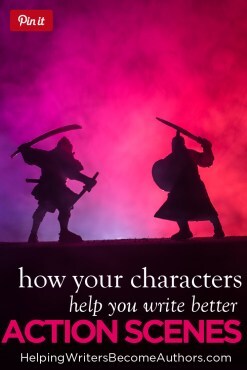 [From KMW: Since I am traveling this week, I’m offering up a shorter post today about how to write better action scenes. For my birthday, I gave myself a month-long “writing retreat” in the mountains! I’ll be posting regular content again next week, and you can check Instagram for some peeks into my adventures.]
[From KMW: Since I am traveling this week, I’m offering up a shorter post today about how to write better action scenes. For my birthday, I gave myself a month-long “writing retreat” in the mountains! I’ll be posting regular content again next week, and you can check Instagram for some peeks into my adventures.]
As an author, you want to create characters so rich and compelling readers will carry a piece of the story with them for the rest of their lives. Then, once you’ve peopled your pages with vivid personalities, you want to shove them into the middle of the most gripping and exciting situations you can think of. The more readers care of about these people, the more likely they are to care about your book.
However, no matter how compelling your characters or how gripping your action, you may still run the great risk of losing readers if you’re employing a distant narrative that pulls readers out of the story, rather than pulling them in deeper.
Here’s an example: A fantasy I read recently featured some of the most brilliant actions scenes I’ve ever read… and yet it still had me yawning and peeking ahead to the next scene.
What went wrong?
In these scenes, the author chose to employ a distant narrative that skimmed over the entirety of the battle, rather than focusing on the personal involvement of the characters I cared about.
The writing went something like this (with a little help from ChatGPT):
Elada drew her slender elven longbow and nocked an arrow. In one fluid motion, she released the arrow, and it flew true, striking one of the bandits in the chest before he could react.
He fell to the ground with a cry.
The remaining bandits lunged at her.
Elada was already in motion. She somersaulted backward, cloak billowing like a shroud. She released arrow after arrow, and the bandits fell, silenced by her relentless assault.
Versus something like this that focuses on how the events are affecting the character:
Lourde’s breath came in ragged gasps. Sweat trickled down his temples beneath his helm. Fear surged through him, a gnawing dread that threatened to paralyze his every move.
But amidst the fear, there was something else, something powerful and relentless—the burning fire of determination. His chest swelled with resolve as he remembered the faces of those he fought for, the innocent villagers who depended on him, the homeland he was sworn to protect.
He let out a battle cry, a primal roar that shattered the suffocating grip of fear. With newfound strength, he charged into the fray, his sword slicing through the air like an extension of his very being. The clang of steel against steel, the roar of fireballs, and the screams of the enemy blended into a cacophonous symphony of battle.
With every swing of his blade, Alaric felt a surge of exhilaration. He was not just a soldier; he was a guardian, a protector. Each strike was a testament to his unyielding will to defend his people. His heart pounded with a fierce joy as he carved a path through the enemy ranks, his movements a dance of death and defiance.
The author was certainly employing all the important techniques of “showing” the action, rather than “telling” it. But because he wasn’t keeping (me) engaged with what was happening for the characters on a personal level, the effect was to distance me from what should have been intense and exciting scenes.
Even the most well-written action scenes grow boring if the reader isn’t given a character to root for. Distant narrative serve its purpose, but it’s largely fallen out of favor in recent decades, due to this very pitfall.
Take a look at your story, particularly your tense, high-emotion scenes, and evaluate them.
Are you allowing readers to experience the scene through the characters’ reactions and actions?Are readers able to stick by the characters every step of the way, gasping when they stumble and cheering when they rally?If not, consider tightening your narrative. Doing so will not only inject more excitement and interest into your scene, it will also be more likely to keep readers on the edge of their seats.
Wordplayers, tell me your opinions! What techniques have you used to write better action scenes? Tell me in the comments!The post Write Better Action Scenes: Make It About the Characters appeared first on Helping Writers Become Authors.
October 16, 2023
Figure Out Your Story’s Magic System Using Story Structure
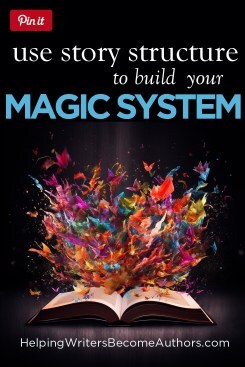 From KMW: If you’ve ever written a story that falls into the broad genre of speculative fiction (fantasy, science fiction, and all their many many subgenres), then you may have faced one of the main challenges of the genre: creating a magic system.
From KMW: If you’ve ever written a story that falls into the broad genre of speculative fiction (fantasy, science fiction, and all their many many subgenres), then you may have faced one of the main challenges of the genre: creating a magic system.
A magic system can be anything from a thoroughly elaborate high concept plot-driver such as in Brandon Sanderson’s fantasy novels, or it can be just a simple tweak on reality as in time-travel stories. Either way, the two most important guidelines for a well-executed magic system are:
The rules must remain consistent throughout the story.The magic system must enhance the plot rather than detract from it.That’s why I’m pleased to bring you a post from C.R. Rowenson, author of The Magic System Blueprint, in which he discusses key points for integrating your existing magic system with your plot structure.
***
What’s up, storyteller? Are you ready to talk about your story’s magic system? Because it’s time to talk about magic!
Crafting a quality magic system that connects well with your story is tricky business. On the one hand, much like writing in general, there’s no wrong way to go about this. That also means there’s no one right way either. Some people can start with nothing, reach deep into the yawning cosmos of creativity, and craft a complete magic system right from the start. You might not work that way. You might need to start with characters or the setting or the plot itself.
So if you’ve been struggling with your magic system, you might just be looking in the wrong places. Stop breaking open random proverbial stones looking for that one gorgeous geode. Let’s get grimy, and talk through how you can mine your outline and your story’s structure for those magic-system gems you’ve been looking for.
The 2 Things You Need to Create Your Story’s Magic SystemBefore you go tearing off with your literary pickaxe, we need to make sure you’ve got what you need to be successful here. Just charging in, swinging wildly, is a good way to end up with a pile of rubble.
What do you need before you can start mining for your story’s magic system? It’s a pretty short list. You really just need two things:
1. A concept for your magic system.
2. A filled-in story structure.
1. The Magic System Concept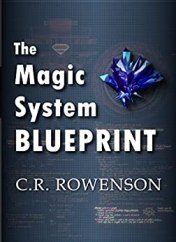
The Magic System Blueprint by C.R. Rowenson (affiliate link)
The concept for your magic system doesn’t need to be anything crazy. You’re just looking for that central nugget, that core idea around which the rest of the system can form. When I talk about magic systems, I usually call this the Seed Crystal for your magic system. You can also think of it as the north star, the elevator pitch, or the central theme.
Concepts range from simple ideas like “elemental magic on a spaceship” to complex ones like “a crew of thieves using metal-based magic to overthrow a god-emperor.” The exact wording doesn’t matter, you just need to know what your magic is going to be about.
2. The Outline/Story Structure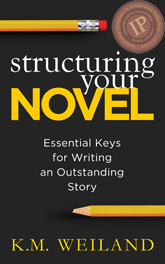
Structuring Your Novel (Amazon affiliate link)
You’re here right now, so I’m assuming you’re quite familiar with outlines and story structure at this point. If not, you may need to put this mining effort on pause while you read through some of the post series or books on this website.
This doesn’t mean you need a full beat-by-beat outline. You don’t even need things planned to a chapter level! As long as you know what you want happening at the major points in your story, then this mining operation is open for business… almost.
4 Fast Tips for Expanding Your Your Story’s Magic SystemThis process helps you find all those little gems and shiny bits you can add into your magic system to make it more interesting and awesome. That can come in a variety of forms, depending on how far along you are with the development of your magic system and your story.
While you’re working through this, try to do, or at least allow for, the following:
1. Create New ThingsAdd rules and limitations to your story’s magic system. Find new magical effects the magic can generate. Add characters and locations to better address what you’re building.
2. Strengthen What’s Already ThereAmplify the emotion and tension in the story. Reinforce the core concept of the magic system. Link concepts and events together with logic and patterns.
3. Add SpecificsTurn generic plot points into fully formed events. Dive into the minutiae of your magic limitations. Define exactly how powerful a magic effect can be. Note exactly what a character does with the magic and how they use it in a specific situation.
4. Allow for Conflicting IdeasThe fastest way to stop the flow of ideas is to focus on finding the “right” idea. Let the ideas pour out. Don’t worry if they make little sense and don’t fit together right now; you patch that together with later drafts. And remember, you don’t (and probably shouldn’t) use all the ideas you come up with here.
Okay. Now that you have the core concept of your magic system and the bones of your story, it’s time for the fun part. Now you’re ready to mine!
Use Story Structure to Optimize Your Story’s Magic SystemThis is fairly straightforward. Examine each of your story’s main structural beats and explore what we discussed above. This is simple, but it can still be daunting. Fortunately, if you’re using the story structure covered on this site, we’ve got lots of marks and milestones to check in on.
The Inciting EventThe Inciting Event pulls your main character into the plot. So how could your magic system kick things off?
Let’s say your story starts with a murder. Was magic used to kill the victim? Maybe the victim actually used magic in an attempt at defense, leaving a subtle but damning, possibly literal curse on their murderer. Does the magic implicate your protagonist?
Or perhaps your story starts with a character trapped in a system of oppression. How does the magic enable the oppressors to maintain power? Does the magic create, enable, or require something others can control? Could the magic simply allow the oppressors such immense power that none can challenge them? Is the magic being used in such a subtle way that most people don’t even know they’re being oppressed?
The Pinch PointsPinch Points are moments when the pressure on the protagonist increases. The antagonist makes a display of power. The stakes of losing are restated, raised, or clarified. The protagonist is put in a lose-lose situation and has to make a terrible decision. Take your Pinch Points and look for ways your magic can create them or make them ten, no, a thousand times worse!
Do you want the protagonist’s power stripped away at a vital moment? If so, build limitations and weaknesses into the magic. Find ways to nullify magical effects. Explore how to shut down a character’s magic abilities entirely. Develop a new character whose magic directly opposes the protagonist.
Need to show your antagonist’s strength and rebuild the stakes? Blow something up! Show the staggering might or extensive control the antagonist has over their magic. Build in new consequences or capabilities to make the bad guy’s plans even more terrifying.
The Plot PointsThese are moments of change in your story, in which your protagonist comes to understand the true nature of the conflict and shifts from being reactive to being more proactive. At their lowest, darkest moment, the protagonist turns things around and starts clawing toward the final conflict. Where does the magic fit in? How does it assist with these changes?
There are so many ways you can do this. Give the protagonist new abilities, or deepen those already in existence. Create nuances and countermeasures within your magic system to make this the moment when the characters discover them. Allow characters to use their existing tools to their full effect for the first time or in entirely new ways.
The ClimaxIt all comes down to this—the big finish and final clash. Here is where everyone’s fates are decided and everything changes for good or ill. The protagonist finally achieves or fails at the goal we’ve been dangling for the entire plot. How does your magic factor into this momentous event?
Make this moment as cool, awe-inspiring, and incredible as it can be. What big guns have the characters been holding out? Are there quirks in the magic adding complications mid-conflict? Does a portion of the magic require a personal sacrifice? If not, maybe it should.
Make choices harder, clashes more intense, consequences more severe, explosions bigger, and emotions deeper with your magic system. Take that intensity knob on your story, and use your magic system to crank it to eleven—and then keep going!
Beware the God from the Machine!Deus ex machina is that moment in a story when a person or thing is introduced suddenly and unexpectedly, such that it creates an artificial or contrived solution to a problem. Sure, this was a popular story-telling technique in the 5th century, but today’s readers want more. We want resolutions to our stories that are satisfying and feel earned.
How do we avoid summoning the god at a crucial moment in our story? The answer is simple: Foreshadowing.
All our efforts so far have been a form of guided brainstorming and creation. Hopefully, this has helped you come up with some incredible gems to add to your magic system and story. It’s now your responsibility to make sure you foreshadow where necessary and allow things to resolve in a meaningful way.
So get back to work. You’ve got a story to tell. And whatever you do, make sure that you keep writing and stay awesome!
Wordplayers, tell me your opinions! Have you ever written a story that required a magic system? Tell me in the comments!The post Figure Out Your Story’s Magic System Using Story Structure appeared first on Helping Writers Become Authors.
October 9, 2023
How to Use Archetypes in a Series
 One of the most common questions I receive is how to use archetypes in a series. The short answer is: however you want! Archetypes are endlessly adaptable. However, there are several important considerations to keep in mind. Most have to do with understanding the shape of the story you’re going to be telling over the course of your series.
One of the most common questions I receive is how to use archetypes in a series. The short answer is: however you want! Archetypes are endlessly adaptable. However, there are several important considerations to keep in mind. Most have to do with understanding the shape of the story you’re going to be telling over the course of your series.
Archetypes are universal symbols. Story itself is archetypal. Plot structure is archetypal. Genres are archetypal. And, of course, characters are archetypal. I have written in-depth about what I call the “life cycle” of archetypal character arcs. This system is centered around six archetypes that represent initiatory transformations within the human experience:
The Maiden (coming of age and individuating from the tribe)The Hero (integrating power with love)The Queen (assuming leadership roles)The King (learning to sacrifice and surrender one’s power)The Crone (grappling with mortality)The Mage (transcending attachment and the need for control)
Writing Archetypal Character Arcs (affiliate link)
In my book Writing Archetypal Character Arcs, I outline structural beat sheets for all these journeys. I also deeply explore the two shadow archetypes attached to each arc (one passive, one aggressive), the “flat” archetypes that live between each of the transformations, and the archetypal antagonists who frame the theme of each arc.
Recently, I released a series of six Archetypal Character Guided Meditations, which I designed as a tool to help writers access their own archetypal wisdom by taking them through all the important plot beats and symbolism of each archetypal journey.
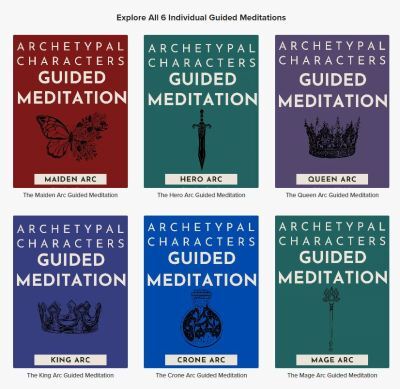
Archetypal Character Guided Meditations
While talking to several of you after releasing this tool, I was inspired to circle back to this common question I receive about how to use archetypes in a series—something so many of you are doing in your stories.
Series are wonderful not just for their potential profitability, but also because they allow us to sink deeply into the experience, exploring aspects and angles of a character’s journey we may not be able to access in a single installment. However, by nature of their complexity, series can also be challenging. If it is difficult to create cohesion and resonance within a single book, a series often ups that quotient multiple times!
I’ve written before about considerations for plot and character arcs in a series:
How to Write Character Arcs in a SeriesHow to Outline a Series of Bestselling BooksToday, I want to explore special considerations when using archetypes in a series.
Before You Think About Character Arcs in a Series, Think About Plot Structure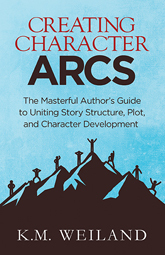
Creating Character Arcs (Amazon affiliate link)
At their heart, archetypal journeys are always character arcs—and resonant character arcs are in themselves a well-defined story shape. Shape=structure. Before you dive headlong into archetypal waters, consider the shape of the series you’re about to create.
For instance, will you be telling a story that features episodic standalone entries? This might be the case in a whodunit serial or in a series of interconnected romance stories featuring a new lead couple in each entry. Or are you planning an overarching storyline that features a single cohesive plot across multiple books?
In either case, it is important that all individual books—whether standalone or part of an overarching storyline—are structurally complete unto themselves. What this means in the case of episodes within a larger storyline is that each installment needs to be a structurally complete unit, featuring a “mini” plotline that can be set up in the Inciting Event and concluded in the Climactic Moment, even as other elements of the story are left to develop throughout the rest of the series.

Structuring Your Novel (Amazon affiliate link)
One of the most common problems I see with cliffhanger endings is not the cliffhanger itself, but the fact that the structure was left hanging. This is a sure way to upset readers. They won’t mind if elements of the overarching story are used to create a cliffhanger, as long as there is a sense of structural integrity and completion to the individual episode.
Another common quandary is how to structure the overarching story itself. How does structural timing play into a series? Ideally, the structural timing plays out much the same as in an individual book. For instance, if you’re writing a trilogy, each of the books in the overarching story can function as one of the Three Acts.
If you’re writing a story with a yet-to-be-determined number of entries, this can become much trickier. Ideally, you will at least have a notion of how the series will end so you can create all the necessary setup and foreshadowing in the beginning and plan important structural moments for each book throughout the series. However, the key rule in structural timing is that “the longer the story, the less precise the timing has to be.” This means that in a series of, say, twenty books, it isn’t crucial that the Midpoint happen exactly in Book 10.
Particularly, if you do know your series’ overarching structure, you may find it helpful to consider chiastic structuring. Chiasmus is a technique in which the beats in the second half of the story mirror those in the first half. There is a deeply archetypal quality to chiastic structure, in which all things come full circle, repeating the pattern at a new level of the spiral.

Once you’ve determined what type of series you want to write, you can start deciding which archetypal character arc makes the most sense for your protagonist. For that, I recommend reading the beat sheets of each archetype (or taking the journey yourself in the Archetypal Character Guided Meditations!). Once you know what you’re working with, consider the following four approaches to how to use archetypes in a series so you can determine which feels most resonant.
1. Match the Beats of a Single Archetypal Journey to the Series’ Overarching StructureThe most obvious way how to use archetypes in a series is to tell a single archetypal journey that spans the entire series. For this, you can take the beats of your chosen archetype and apply them to the structure of the series. Your character will complete their archetypal transformation by the end of the final book.
As mentioned earlier, it is still important for each book within the series to offer a complete and encapsulated plot structure, from Inciting Event all the way to Climactic Moment. Because plot structure is so closely tied to character transformation, this means the protagonist will likely experience a “mini” character arc in each book.
One of the most intuitive ways to approach this is to focus the overarching plot and arc of your series on the story’s main thematic Lie and Truth, while the individual installments each tackle a smaller version or “symptom” of the Lie, slowly advancing the character toward the ultimate realization at the end of the series.
When you’re telling an overarching story about a single archetypal journey, you can examine the archetype’s structure to identify what themes might be most important to explore in each individual story’s character arc. For example, if your character is following a Maiden Arc as did most of the young characters, such as Annie, in the series Sweet Magnolias, you can choose to explore a character’s “Protected World” in one book, their “New Identity” in another, their dance with the “Predator” in another, and so on.

Sweet Magnolias (2020-), Netflix.
This approach is common in plot-driven series, in which most of the story will be focused on external action. If you’re wanting to go deeper with character development, it will often make more sense to explore multiple successive archetypes for the protagonist (see Point #2, below). However, creating the foundation of a single archetypal character arc can bring a powerful depth to a plot-driven story by grounding the action in the archetype’s deep symbolism.
2. Advance the Protagonist Through All Six Archetypes Over the Course of the SeriesIn contrast to choosing to drill deep with a single archetype over the course of many stories, you can also choose to explore a new archetypal transformation in each new installment. This is a common approach in most series, especially those that cover lengthy timespans and/or put their characters through particularly challenging circumstances.
The beauty of this approach is that each of the six archetypal character arcs aligns with a structural beat.
The Maiden: Inciting EventThe Hero: First Plot PointThe Queen: First Half of Second ActThe King: Second Half of Second ActThe Crone: Third Plot PointThe Mage: ClimaxNot only does this make it easier to plan your structural and character development throughout your series, it also offers the opportunity to transform your entire series into a deeply cohesive and resonant journey.
If you choose this approach, it is not necessary to feature all six archetypes. For instance, you may choose to explore only two.
It is also important to note that even though the archetypal progression does align with story structure, you do not have to adhere your series’ structural timing to this alignment. For instance, if you choose to write successive stories that chart the protagonist’s arcs through Hero and Queen, the archetypes themselves need not always be contained to separate books. You can tell a series in which the Hero and the Queen both feature in Book 1, the King features in Book 2, the Crone happens in between books, and the Mage closes out the series in Book 3. (And, of course, you may also choose to feature multiple archetypes within the span of a single book, as does T.H. White’s Once and Future King, which follows King Arthur from Maiden through King).
Series such as Orson Scott Card’s Ender Quartet and Frank Herbert’s Dune Chronicles follow their protagonists throughout their lifetimes, allowing them to chart through almost all of the archetypes. Similarly, Katniss Everdeen in The Hunger Games trilogy can be seen to successively represent variations on the Hero, the Queen, and the King in each installment.
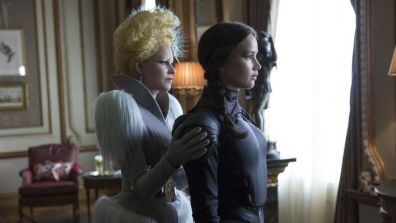
The Hunger Games: Mockingjay, Part 2 (2015), Lionsgate.
3. Follow Multiple Character Arcs Through Interwoven ArchetypesBy their very nature, archetypes do not exist in a vacuum. We see this most popularly in the Hero Arc, which classically features a Call to Adventure initiated by either a Mage character or his flat archetype partner of Mentor. Once you know what archetypal journey(s) your protagonist will be taking, you can discover which supporting archetypes will be most helpful for your story.

Writing Your Story’s Theme (Amazon affiliate link)
You can also choose to feature concurrent archetypal character arcs for multiple characters. Particularly if you are telling a sprawling tale that features a large cast and/or multiple plotlines, you can access tremendous depth by exploring your story’s theme through the varied lenses of characters who are all experiencing different archetypal initiations.
For example, one of the many reasons The Lord of the Rings is able to offer such incredible symbolic resonance is its concurrent exploration of multiple archetypal journeys. We can see Frodo taking a Hero Arc, Aragorn taking a Queen Arc, Theoden taking a King Arc, and Gandalf transitioning from Crone to Mage (and these are all found amongst many other related flat and shadow archetypes throughout the story).

The Lord of the Rings: The Fellowship of the Ring (2001), New Line Cinema.
Thanks to its inherent complexity, this approach is necessarily intensive. The more arcs you follow, the more potential loose ends you will have to bring together in a thematically cohesive finale. However, if you tune in deeply to the archetypes themselves, they will show you how you can weave all of them together in a way that ultimately tells a single overarching story (the story of the life cycle!), rather than many disparate subplots.
4. Feature a Single Flat Archetype Throughout the SeriesFinally, you can also choose to feature a single unchanging flat archetype over the course of your entire series.
Flat archetypes are:
Child (precedes Maiden Arc)Lover (precedes Hero Arc)Parent (precedes Queen Arc)Ruler (precedes King Arc)Elder (precedes Crone Arc)Mentor (precedes Mage Arc)They are are most commonly seen in series that feature episodic standalone stories—ones in which the protagonist goes on a new “adventure” in every installment. Characters such as Jack Reacher who travel to new locations to encounter new plot challenges fit this description, as do protagonists in many long-running children’s series and many whodunit detectives such as Hercule Poirot.

Agatha Christie’s Poirot (1989-2013), ITV.
However, you can also feature a consistent flat archetype in a more traditional Flat Arc story—in which the Flat Arc protagonist represents the story’s Truth and uses it to initiate the transformations of supporting cast members.
In these stories, the most important archetypal choices are often those of the supporting cast. Writing a truly powerful flat archetype over the course of a lengthy series comes with its own challenges, since by their very changelessness, these characters can sometimes lack dynamism. However, when done well, they are incredibly powerful.
A modern example would be Steve Rogers in the MCU, who holds to the flat Ruler archetype throughout most of the series, while other characters (most notably Tony Stark) change around him and because of him.

Captain America: Civil War (2016), Marvel Studios.
***
The depth available in writing archetypal stories is never-ending. If you choose to go deep with a series, you can explore your characters’ archetypes in so many ways. Understanding how to write archetypes in a series is a powerful step forward in bringing complexity, nuance, and deep thematic resonance to any type of story you may want to tell.
Wordplayers, tell me your opinions! What’s your best advice for how to use archetypes in a series? Tell me in the comments!Click the “Play” button to Listen to Audio Version (or subscribe to the Helping Writers Become Authors podcast in Apple Podcast or Amazon Music).
___
Love Helping Writers Become Authors? You can now become a patron. (Huge thanks to those of you who are already part of my Patreon family!)The post How to Use Archetypes in a Series appeared first on Helping Writers Become Authors.
October 2, 2023
How Meditation Can Inspire Your Next Story
 As writers, it often seems we are channeling our stories more than creating them. So it should be no surprise to learn the tool of meditation can inspire your next story.
As writers, it often seems we are channeling our stories more than creating them. So it should be no surprise to learn the tool of meditation can inspire your next story.
I have often thought of writing as something of a meditation. When we’re really in the zone, it can feel like an altered state. Especially when I was younger, inspiration would sometimes strike with such force I’d call it a story high. I could ride it for week sometimes—before experiencing story hangover!
As writers, our great love affair is with inspiration. Sometimes that relationship is on, and we are flooded with creative passion and more ideas than we know what to do with. At other times, we have to put in the work to court our inspiration. Most writing lives require a balance of both. One of the most profound lessons I have learned over the last decade is the importance of cultivating a lifestyle of creativity. This means not just observing what lifestyle patterns contribute to sustainable creativity over the long-term, but also seeking out specific tools that can help foster and boost creative patterns.
Turns out mediation can be one of those tools.
Accessing Subconscious Creativity Via Meditative StatesMeditation has become increasingly popular in recent decades, mostly for its positive effects on mental health. For me, it has been a gamechanger in so many ways. I came to it several years ago during a difficult period in my life and have instituted a daily practice that has literally become my favorite time of the day. But before I was ever meditating “on purpose,” I was using this same brain space whenever I played with my stories. Whether I was daydreaming in the car, telling myself stories as I fell asleep, imagining my characters throughout the day, writing away on a story high, or purposefully journeying into what I came to call the “dreamzone”—I was unwittingly taking advantage of the profound benefits that meditative states can offer creativity.

Writing Archetypal Character Arcs (affiliate link)
Last week, I released six guided meditations that take writers on a journey through the primary archetypal character arcs of the life cycle. I’ve discussed all of these archetypes in-depth here on my site and in my latest book Writing Archetypal Character Arcs. But as I pondered what I project I wanted to work on next, I realized what most excited me was sharing the tools that have transformed my life and my creativity over the years. I wanted to create a tool that didn’t just tell writers about story techniques, but that helped them access and experience the stories for themselves.

Archetypal Character Guided Meditations
Guided meditations are a helpful tool for easing us into a meditative state via gently narrated instructions. The narrator might invite you to visualize certain things or explore certain sensations or emotions in your body. A guided meditation provides a sort of guardrail you can hang onto as you descend into the boundlessness of your own subconscious. Guided meditations can be a fabulous tool for helping us let go of our conscious brain’s expectations of what we “should” be thinking about. Instead, we can use the prompts provided by the narrator to allow images, ideas, and emotions to arise freely in our brains. In my experience, the results can be profound and surprising.
However, guided meditations are only the tiniest tip of what is available to writers in using meditation to inspire story ideas. (More than that, I should state that I do not believe guided meditations are a replacement for a dedicated personal practice.) The aim is to access our subconscious creativity, to delve beneath the conscious and “logical” chatter of our ego brains, and to discover the resonant symbolism and profound originality within the deep reaches of our own imaginations.
5 Steps to Use Meditation to Inspire Your Next Story
From Where You Dream by Robert Olen Butler (affiliate link)
My own personal favorite approach to using meditation to inspire my stories is what I call “dreamzoning” (a term I misquoted from Robert Olen Butler’s guide From Where You Dream). It requires no guide, although I do set up my space with certain helpful cues (particularly music) to help prime the pump. For me, the experience of purposefully entering the dreamzone is both exhilarating and deeply restful. In contrast to consciously brainstorming a story, which is often an intense and even tiring experience, “dreamzoning” is like, well, dreaming. It’s like tuning in to a favorite program and just watching. For me, there’s also a deep sense of coming home. I never leave the dreamzone without at least one great idea for my story—and usually many, many ideas!
Whether you’re using a structured approach such as the Archetypal Character Guided Meditations or just freewheeling, here are the five steps I use to create a successful meditation for new story ideas or inspiration.
1. Set the SpaceThis could mean seeking privacy, shutting the door, turning off notifications. It might mean turning out the lights or waiting until evening. But it could also mean taking a walk or a ride in the car. The point is to create a physical container for the experience that will help you avoid distractions and allow you to turn off your “front brain” and settle in to your deep imagination.
2. Add a “Zone-Out” AidTo help in tuning out the distractions and dropping in, you may find it helpful to add some sort of a visual aid as a focal point. At its simplest, you might just choose a spot on the wall and stare at it. But I always find it helpful if my visual aid offers gentle, rhythmic movement. My personal fave is fire. A fire pit at night is ideal, but I’ve also used candles. If you don’t have access to a fire, you could try streaming a fireplace video or a nature video. I’ve also found lava lamps particularly restful in a hypnotic sort of way.
3. Choose MusicSome people will find silence to be most helpful in sinking in, but you may also want to add music. For me, music takes it all to another level. Of itself, it creates a “guided” experience that allows you to use the cues (whether lyrics or just the emotional response to the music) to invite you deeper into your story. Choose your music carefully, since the wrong music can throw off everything (although I will say that sometimes music that doesn’t seem to fit can help you discover unexpected moments in your stories).
4. Treat It Like a Meditation (But Fun)Some people hear the word “meditation” and think, Oh, that’s too boring and hard. I could never do that. Meditation of any sort does require discipline—to sit still, to be with one’s own body, to ignore insistent thought patterns, to concentrate, etc. However, in my experience, creative meditation is never anything but fun.
That said, to get the full benefit, you do have to treat it like a meditation, complete with the sitting still and the concentrating. If you find it difficult to sink in due to distracting thoughts or fidgets, just stick with it. This is where the music and visual aids can become helpful in distracting you from your distractions. But most of all, remember it’s fun. You get to be a kid again and just daydream and play in your own imagination. If it feels too much like work, then it may not be the right time for this particular tool.
5. Take NotesIn my younger years, I used to hold the belief that “the only idea worth writing is one I will remember.” Countless forgotten ideas down the road, I no longer believe that! Nowadays, I take conscientious notes. The dreaminess of meditative states can make it just as easy to forget your new ideas as it is to forget your nighttime dreams a few minutes after waking. Although you may not want to interrupt the meditation itself, keep a notebook handy so you can scribble down any ideas or images you want to remember. The vast majority of notes in my idea folder for any given story are ones I took during a dreamzoning session. So much good stuff!
6 Benefits of Using Meditation to Prep Your StoryThe dreamzone is a place without rules. You can use it however feels most intuitive and helpful to you. But by its very nature, it can also feel a bit overwhelming. What do you do when you get there? Here are some of the things I focus on when I head into the dreamzone to play with my stories. You can use any or all of them to help you get the most out of your creative meditations.
1. Find the Big Scenes and Plot Points
Structuring Your Novel (Amazon affiliate link)
Often, the images and ideas that come to you in the dreamzone will be big ones. Especially if you’re using cinematic music for inspiration, you will likely find yourself swept away by what will become the biggest moments in your story. Unless you’re using a guided aid such as the Archetypal Character Guided Meditations, which walk you through the entire story arc and all the major plot points, you may want to keep a part of your brain alert to which scenes will make the most sense at different moments in your story’s structure.
For instance, when I was dreamzoning with my WIP Wildblood, I saw a scene in which one character seemed to die, was saved by another—and, in so doing, both of their magical powers and identities were revealed. Thanks to my awareness of story structure, I knew right away this was likely to end up being the First Plot Point in my story, and this helped me guide my imaginings from there.
2. Tap Into Organic OriginalityThe best thing about the dreamzone is that it offers a hotline to your subconscious creativity. This is the deepest part of you, and therefore the most original. This is a direct line of communication with the ideas and messages that are yours to speak in this life. Although what you see in the dreamzone will undoubtedly be influenced by all the images your mind has stored throughout your life, you will also have the capability to access images, characters, and scenarios you’ve never seen enacted in other people’s stories. Although it’s totally fine to play with tropes you enjoy, when something you’ve never seen before pops up, pay attention. Follow it down the rabbit hole and see if it leads you to surprising places your conscious brain may never have been able to dream up.
3. Go Deep to Discover Authentic Character Arcs
Creating Character Arcs (Amazon affiliate link)
The other cool thing about the subconscious is that it is steeped in archetypes. Just as our brains naturally understand the shape of story long before we start learning the technicalities of story structure, we also naturally understand the language of archetype and therefore character arc. In short, our subconscious brains are often much better storytellers than our conscious brains. For me, I always notice a depth of resonance to the character development I experience when in the dreamzone that is much harder to access simply through left-brain knowledge and technique.
More than that, playing with archetypes in the dreamzone (whether they arise naturally or whether you’re consciously drawing upon one, as I’ve done in the Archetypal Character Guided Meditations), can be personally transformative as well. After all, our characters are us. Anytime an archetypal character presents itself to our imagination, it represents a part of our own brains interacting with that deep symbolism.
4. Make Use of the SymbolismSpeaking of which, the symbolism itself can be a blast! Particularly if you’re a visual thinker, take note of the imagery. What colors are especially vibrant? What animals wander through the scene? You might see scenes or snippets from your story that don’t obviously impact the plot, but that offer insight into deeper meanings in your story.
For example, my first snippet of inspiration for Wildblood was a single image, of a woman dressed in severe Tudor black, standing in front of a single stone tower in a snowy landscape, with a raven overhead. At the time, I didn’t know anything about what these images meant, but I played with them until they revealed a depth of symbolism and meaning that eventually became a whole story!

A Midjourney rendering of my initial image of inspiration for my WIP Wildblood.
5. Get UnstuckAs a creative aid, meditation is unparalleled. Whenever your logical brain gets snarled up on a plot problem, take a ramble into the dreamzone and let your subconscious have a crack at it. Shifting from our “word brain” to our “picture brain” can bring in a whole host of new ideas and solutions that might never have occurred to us otherwise.
6. Remember the Wonder and Have FunNot only can meditation inspire your next story, but it can also serve to remind you and/or keep you in touch with the glory that is creative storytelling. If you ever find yourself taking your writing too seriously or feeling like you’ve lost the joy of the craft, giving yourself permission to simply daydream is the single best way I know to return to the wonder of storytelling. Although meditation, in all its many forms, can take you deep and initiate intense transformations, it is also fun. It offers a return to the simplicity of our own imaginations, such as we experienced in childhood, back when we walked the dreamzone all the time.
***
Most writers access meditative states without even realizing that’s what they’re doing. But if you’re feeling in need of a little extra wonder (let’s be honest, who isn’t!) or just want to consciously utilize the manifold benefits of using meditation as a creative aid, try setting aside some dedicated time to play in the dreamzone. If you want to start out with a guide that will help you explore specific archetypes and symbolism, as well as all the important structural beats, you can check out my new Archetypal Character Guided Meditations. But really, all you need is a little privacy and your own imagination. Who knows what you’ll find!
Wordplayers, tell me your opinions! Do you think meditation can inspire your next story? Have you ever tried “dreamzoning” or some equivalent? Tell me in the comments!Click the “Play” button to Listen to Audio Version (or subscribe to the Helping Writers Become Authors podcast in Apple Podcast or Amazon Music).
___
Love Helping Writers Become Authors? You can now become a patron. (Huge thanks to those of you who are already part of my Patreon family!)The post How Meditation Can Inspire Your Next Story appeared first on Helping Writers Become Authors.
September 25, 2023
Announcing Archetypal Character Guided Meditations! (+Giveaway)
All this summer, I have been working hard on a secret project that combines two of my favorite things: archetypes and guided meditation. Today, I’m thrilled to announce I am releasing six Archetypal Character Guided Meditations!
Based on the six transformational character arcs that I shared in my book Writing Archetypal Character Arcs, these meditations are designed to help you access the deep symbolism of your own imaginations. While it’s true that reading about archetypes in a book or learning the structural beats of their arcs can be transformative, the true magic of archetypes is not found in reading someone else’s definitions, but in tapping the symbolism in your own mind.
These guided meditations will help you:
“Dreamstorm” new ideas for your stories.Evoke the universal symbolism of archetypes.Access your own unique relationship to all the archetypal arcs.Journey through the structural beats of each archetypal journey.Understand your characters at a deeper emotional level.Intuitively create intertwined plots, characters, and themes.In creating these meditations, I wanted to share with all of you what has been one of the most fantastic imaginative tools I’ve ever used. I call it the “dreamzone,” but basically it’s just doing what writers do best: zoning out and daydreaming about our stories. The difference is that we’re doing it consciously, and with the help of these Guided Meditations, you can access all the most important parts of each archetype from deep within your own imagination.
What to Expect in the Archetypal Character Meditations6 audio downloads of between 45–61 minutes in length, allowing you enough time to fully sink into the experience.Each download offers one version with gentle background music to help you concentrate.And another version without music, so you can listen without distraction or choose your own thematically appropriate playlist for inspiration.A transcript of the audio recording, so you can reference the text and/or use its questions as a workbook for further brainstorming.Links to free resources for further study on appropriate archetypes.A 25% off coupon for the e-book Writing Archetypal Character Arcs (note: it is not necessary to read the book in order to use the meditations).Each of the six meditations is sold separately, so you can choose which ones are most appropriate for your story. I’m also offering all six in a discounted bundle that gives you one free!
The Maiden Archetypal MeditationThe Hero Archetypal MeditationThe Queen Archetypal MeditationThe King Archetypal MeditationThe Crone Archetypal MeditationThe Mage Archetypal MeditationBundle of 6 – Get 1 Free!FAQsWhat are guided meditations?Meditation is the practice of clearing your mind and focusing your attention. Some types of meditation focus on visualization with the intention of allowing ideas and images to arise from deep in one’s own mind. A guided meditation is one in which the process is directed by another party. Guided meditations often use a script, in which the narrator encourages the listener to visualize specific images. In this case, the goal is to help the listener (you!) visualize new story ideas within the framework of specific archetypal journeys.
What are archetypal character arcs?Archetypes are symbols representing specific experiences that are recognized as culturally or even universally potent. Archetypal character arcs explore transformational periods within the human life. Specifically, I teach a cycle of six important archetypal character arcs, alternating between feminine and masculine and chronologically advancing through the human life. These archetypes are Maiden and Hero (the archetypal journeys of youth, concerned with individuation and independence), Queen and King (the archetypal journeys of maturity, concerned with power and responsibility), and Crone and Mage (the archetypal journeys of elderhood, concerned with the mysteries of life and death). Each archetypal journey represents a crucial initiation within the human experience.
Will these meditations be helpful if I’m a discovery writer (aka, pantser)?Everyone’s mileage will vary, of course. But one of my beta testers, Ed Conway, preferred the discovery approach to writing. He said:
“I’m naturally a pantser or discovery writer. The guided meditations you’re offering are perfect for my writing approach. They have just the right amount of prompting, without demanding precision and nailing things down. I don’t know if you set out to make the perfect brainstorming aid for pantsers and discovery writers, but that is what you’ve accomplished.”
Will these meditations be helpful if I’m an outliner?If you’re a regular around here, you know I’m a heavy-duty outliner myself, and I love using this meditative approach (obviously!). My process is to dive into the dreamzone for fresh right-brain ideas, then take them with me into the more left-brain space of plotting and piecing them all together into a cohesive whole. For me, a meditative exercise like this helps ensure my planning is never stale or overly mechanical. Ultimately, I want any story I write to be a partnership between my subconscious creativity and my conscious knowledge and logic. The Guided Meditations are designed specifically to help you accomplish this.
What if I’m not a visual thinker?The meditations do focus on invitations to visualize your characters and story world. However, they also offer many questions that can be used as prompts without any need for visualization. Another of my beta testers was a non-visual thinker who found the experience successful in advancing his story.
Can I take the meditation for myself as well as my characters?Absolutely! Although I’ve designed the meditations specifically to help writers envision their characters, they can also be used for personal growth work. Just in taking an archetypal journey on behalf of your characters, you are necessarily taking it for yourself at some level too. But you can certainly use the meditation specifically to access your own personal relationship to any of the archetypes. Marya Miller, another of my beta testers, told me:
“I liked the way you invited people to use the archetype meditation for themselves as well as their writing/story. One has to be diligent in improving oneself to do one’s characters justice! Meditation can provide epiphanies and insights that take that quest one step further. I can see it helping book and reader grow together.”
Start Your Archetypal Journey!Archetypes can help you write stories that tap the depths of the human experience. More than that, any encounter with an archetype has the true potential to catalyze change and growth in your life. Whether you’re listening for your characters or yourself, this potent combination of archetypal wisdom and subconscious imagination can take everything you understand about stories (and life) to the next level.
Ready to start dancing with some archetypes? (Yaassss!) Learn more about each archetype (and the bundle of 6) right here.
Win a reMarkable 2 Tablet!
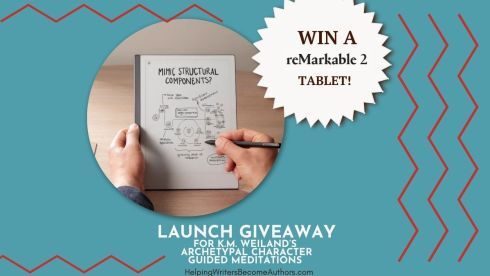
Of course, what would be a launch without a prize giveaway? Today, I am giving away a reMarkable 2 tablet* (value $279). According to their site:
Replace your notebooks and printouts with the only tablet that feels like paper. All your handwritten notes, to-dos, PDFs, and ebooks, perfectly organized and in one place.
I love this as a giveaway for this launch, since journaling all your brand-new ideas is the perfect next step after listening to the Archetypal Character Guided Meditations!
*The refurbished model, in support of circular economies.
To EnterWinners will be announced Monday, October 2nd. Enter below! (Note: no purchase is necessary to enter.)
Finally, I must send out a huge thank you to my beta testers: Joseph Nastanski; Ed Hrafnskald Conway; Marya Miller; Cain Gonzales; Usvaldo de Leon, Jr.; Beverly Goldfarb; and Kirstin Proffitt Olson. You were all invaluable in helping me prepare to share these meditations! Thank you for your keen eyes (and ears)!
Good luck to everyone in the drawing, have fun, and thank you for helping me celebrate the launch of the Archetypal Character Guided Meditations! Happy dreaming, happy writing!

The post Announcing Archetypal Character Guided Meditations! (+Giveaway) appeared first on Helping Writers Become Authors.
September 18, 2023
What Are Antagonistic Proxies? And How Can They Help Your Story?
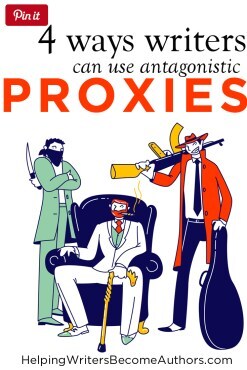 Understanding how story works means stripping it down to the basic mechanics that undergird storyform itself. At its simplest, story is protagonist versus antagonist. However, it’s important to understand the definitions. Although we most commonly (and usefully) think of protagonist and antagonist as vibrant, three-dimensional personalities, the functional reality is a bit simpler. Protagonist is the part of the story that drives the plot via a forward-moving goal. Antagonist is the corresponding part of the story that creates conflict by obstructing that forward momentum. So what are antagonistic proxies, and how do they fit into this mix?
Understanding how story works means stripping it down to the basic mechanics that undergird storyform itself. At its simplest, story is protagonist versus antagonist. However, it’s important to understand the definitions. Although we most commonly (and usefully) think of protagonist and antagonist as vibrant, three-dimensional personalities, the functional reality is a bit simpler. Protagonist is the part of the story that drives the plot via a forward-moving goal. Antagonist is the corresponding part of the story that creates conflict by obstructing that forward momentum. So what are antagonistic proxies, and how do they fit into this mix?
It’s true that on a mechanical level, the antagonist is simply whoever or whatever stands between the protagonist and the ultimate goal. But when we start layering on all the enticing nuances and details that take story from a basic equation into a full-blown facsimile of real life, we start discovering a couple more rules of thumb.
One is that the antagonistic force needs to be consistent through the story. Just as the protagonist’s forward drive should create a cohesive throughline all the way through the story, from Inciting Event to Climactic Moment, so too should the antagonistic force present a united front that consistently opposes the protagonist for thematically resonant reasons.
But this gets tricky. As you deepen the complexity of your story in pursuit of that “facsimile of real life,” it can often become difficult to create logical story events and to keep the protagonist and the antagonist properly aligned throughout.
For instance:
Your story might not feature a specific human antagonist, but rather a series of humans who oppose the protagonist at different levels and moments.Your story might not feature a human antagonist at all.Your story might play out on a large scale in which it simply doesn’t make sense for protagonist and main antagonist to meet until late in the story or maybe not at all.Your story is complex, as is life, and focuses on a system as the antagonist rather than a specific person or entity.Your story focuses on relational goals rather than action goals, in which case the antagonist might, in fact, be the protagonist’s greatest lover, friend, or supporter (more on that in a future post).These variations, and many more, show how antagonistic proxies can come in handy. And what are antagonistic proxies? Antagonistic proxies are exactly what they appear to be: less important characters who stand in for the main antagonist. Really, the use of antagonistic proxies is quite intuitive. There’s a reason the henchman is a universal trope!

Structuring Your Novel (Amazon affiliate link)
However, using antagonistic proxies comes with some pitfalls. The most important pitfall is that when you start adding in sub-antagonists without understanding the underlying function of the antagonist’s role in storyform, you can end up struggling with a chaotic story structure or a plot and/or theme that feels like it’s being pulled in many different directions. The good news is that as long you understand the function of antagonist, you can add as many antagonistic proxies as you need without derailing your story.
>>Click here to read “The Role of the Antagonist in Story Structure“
Antagonist vs. Antagonistic Force vs. Antagonistic ProxiesFirst of all, let’s take a quick look at the differences between antagonist, antagonistic force, and antagonistic proxies.
What Is the Antagonist?The antagonist is the force within the story that opposes the protagonist’s forward momentum. Although this term can be used interchangeably with antagonistic force, below, it usually specifies a sentient antagonist. This is the person who is an equal and opposite entity to that of the protagonist, such as the Evil Stepmother in opposition to Cinderella.

Cinderella (2015), Walt Disney Pictures.
Often, we perceive this term as synonymous with “villain.” However, the antagonist’s role within storyform requires no moral alignment. It is a neutral term referring only to the opposition encountered by the protagonist. Similarly, “protagonist” is also morally neutral and not synonymous with “hero.” From the perspective of story mechanics, it is entirely possible the protagonist could be the most morally corrupt person in the story while the antagonist is the most morally upright.
For example, in Catch Me if You Can, Leonardo DiCaprio’s protagonist is an unrepentant conman while Tom Hanks’s antagonist is a dutiful FBI agent.
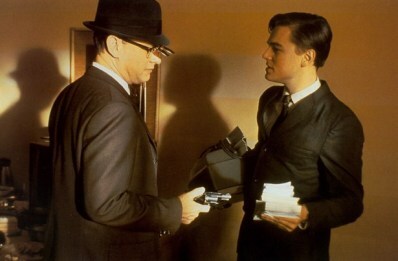
Catch Me if You Can (2002), DreamWorks Pictures.
Just as the protagonist should be the primary actor in every major structural beat throughout the story, the antagonist should be the primary opposition in every beat. Together, they create a unified structural throughline. If you’re uncertain who or what is your primary antagonist, examine your Climactic Moment. Whatever person or force is decisively confronted here is your main antagonist. That is the antagonist that needs to provide opposition to your protagonist throughout.
What Is the Antagonistic Force?In all practical ways, “antagonistic force” is synonymous with “antagonist.” It functions within storyform in exactly the same way: as the opposition to the protagonist’s goal. However, I prefer “antagonistic force” when speaking more generally about this opposition, since this term is more inclusive and can be used to indicate opponents to the protagonist that are not easily represented by another person.
For instance, an antagonistic force could be the weather or other circumstances that threaten basic survival, as in Cormac McCarthy’s The Road.
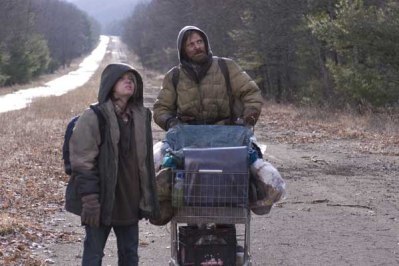
The Road (2009), 2929 Productions.
It could be ill health or old age, as in David Guterson’s East of the Mountains.

East of the Mountains (2021), produced by Jane Charles, Mischa Jakupcak.
Or it could be a generally vague system of oppression such as the Republic of Gilead in Margaret Atwood’s The Handmaid’s Tale.

The Handmaid’s Tale (2017-), Hulu.
It could also be something as subtle as the difficulties of completing a specific task, such as renovating a new house in the classic screwball comedy Mr. Blandings Builds His Dream House.
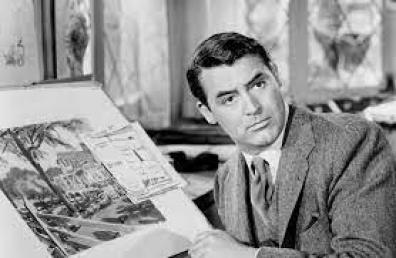
Mr. Blandings Builds His Dream House (1948), RKO Radio Pictures.
If you’re employing a more general antagonistic force, rather than one specific human antagonist, you will have more opportunity to employ antagonistic proxies. In these types of stories, it is especially important to recognize that the antagonistic force must present a unified opposition to the protagonist even if the actors who represent that force are varied.
>>Click here to read “How to Choose the Right Antagonist for Any Type of Story“
What Are Antagonistic Proxies?And that brings us to the main event. What are antagonistic proxies? They are characters (or situations or systems) that function as representatives of the primary antagonistic force. You may choose to use an antagonistic proxy for many reasons.
Perhaps your antagonist isn’t logistically available to show up in a scene with your protagonist, as with President Snow in The Hunger Games, whose proxies include the other tributes in the games.
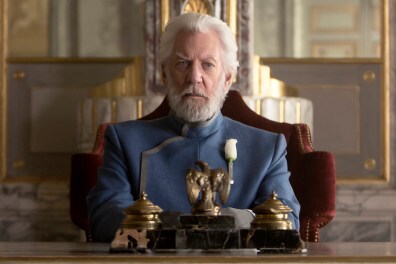
The Hunger Games (2012), Lionsgate.
Perhaps your antagonist is not a single person, as in Saving Private Ryan, which focuses on a generalized Nazi Army as the antagonistic force.

Saving Private Ryan (1998), DreamWorks Pictures.
Perhaps your antagonist is powerful enough to cause and/or need others to act in their stead (as would the case with any antagonist in a leadership position), as in Lord of the Rings, in which Saruman acts as Sauron’s proxy for most of the story.

Perhaps you are bringing complexity to your story via characters who act as your main antagonist’s allies, as with characters such as Grigor in The Great.
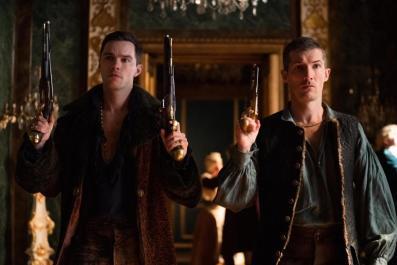
The Great (2020-23), Hulu.
Whatever the case, antagonistic proxies should receive all your attention and skill in bringing them to life. Except in certain cases where walk-on characters make the most sense, you don’t want your audience ever thinking of these characters as antagonistic proxies. They should come to life with just as much care and attention as the major players—because insofar as they represent the antagonist, they are major players.
A Note on Redshirts vs. ContagonistsAntagonist proxies can show up in your story in many different guises. Some will be walk-ons who express opposition on the main antagonist’s behalf, then leave to never be seen again. Others will play much more nuanced roles, in which their own personal views and motives in the story will contrast the antagonist even while functioning structurally on the antagonist’s behalf.
Two main types to consider for antagonistic proxies are redshirts and contagonists.
Named after throwaway cast members in Star Trek, a redshirt is a stock character whose death is often used for convenient plot devices.
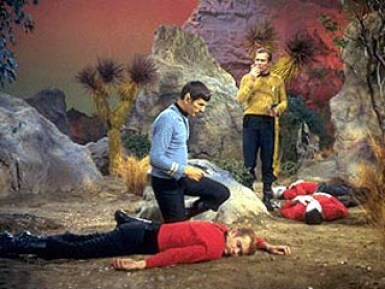
Star Trek: The Original Series (1966-69), NBC.
Whether aligned with the protagonist or the antagonist, the redshirt is intentionally a cardboard character, perhaps even unnamed. These characters are useful in stories that require cannon fodder. For example, if your antagonist is a general, then every soldier in his army will represent his opposition to the protagonist and therefore be an antagonistic proxy. However, most of them will exist only to create great odds against which the protagonist must struggle.
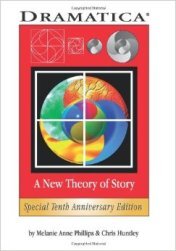
Dramatica by Melanie Anne Phillips and Chris Huntley (affiliate link)
At the other end of the spectrum, we have contagonists. This term originated with the Dramatica theory by Chris Huntley and Melanie Anne Phillips. They officially define the contagonist as:
…the character that balances the Guardian. If Protagonist and Antagonist can archetypically be thought of as “Good” versus “Evil,” the Contagonist is “Temptation” to the Guardian’s “Conscience.” Because the Contagonist has a negative effect upon the Protagonist’s quest, it is often mistakenly thought to be the Antagonist. In truth, the Contagonist only serves to hinder the Protagonist in his quest, throwing obstacles in front of him as an excuse to lure him away from the road he must take in order to achieve success. The Antagonist is a completely different character, diametrically opposed to the Protagonist’s successful achievement of the goal.
Within the simple equation of story as two opposing forces, the contagonist’s role of “hindering” and “throwing obstacles” clearly aligns with that of the antagonistic force and should structurally function as an antagonistic proxy. However, the contagonist is a character who offers much more room for thematic exploration.
The contagonist exists within shades of gray. The contagonist may be an ally of the antagonist, a lone operator, or even an ally of the protagonist. The contagonist is often the “devil on the protagonist’s shoulder”—not so much a character who threatens to stop the protagonist through direct opposition, but rather one who tries to convince the protagonist to give up.

Writing Your Story’s Theme (Amazon affiliate link)
Contagonists offer the opportunity to take your story out of a simple two-point opposition and into a dimensional conflict with nuanced thematic arguments. Both Robert McKee’s thematic square and John Truby’s four-cornered opposition offer helpful models for implementing a contagonist.
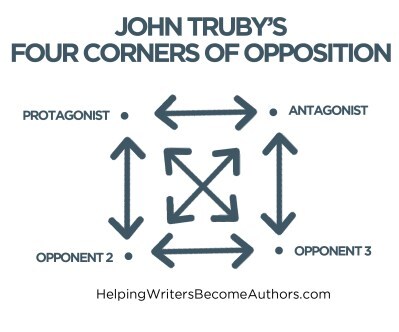
However, as always, what’s most important is ensuring that whatever contrast the contagonist offers to the story is still ultimately in support of the main antagonistic throughline at every important structural beat.
4 Ways Antagonistic Proxies Can Help You Plot Your StoryAs we close out, here are four quick tips for how to use antagonistic proxies to your advantage depending on your story’s needs.
1. LogisticsOne of the main reasons to employ antagonistic proxies is practicality. If it isn’t logistically possible or sensible for your main antagonist to visit your protagonist at certain crucial moments, you can often employ an antagonistic proxy. For instance, whenever you see a protagonist in a story being served a subpoena, the character doing the serving is likely a walk-on acting in the antagonist’s stead.
2. ManpowerThe more powerful the antagonist, the higher the stakes. This means it can be helpful to give your antagonist allies. These could be employees, soldiers, supporters, family, or friends. Depending on the scope of your story and the consequences you want your protagonist to face for pursuing the plot goal, you may need to bring in large swathes of antagonistic proxies to boost your antagonist’s power level within the story. These supporting characters can all be redshirts, or they can be fleshed-out personalities in their own right. Either way, their actions reflect your antagonist’s opposition.
3. RealismIn some instances, it just won’t make sense for your antagonist to perform certain tasks (such as that subpoena). If your antagonist is powerful within your story world, then she may need to employ ambassadors and liaisons (or, ya know, assassins) in her stead. Even in lower-key stories, it may still make sense for your antagonist to ask a friend to intercede with the protagonist. (We see this often in romance stories, in which the two romantic leads function as each other’s antagonists.)
4. TensionEmploying antagonistic proxies is not only realistic in many instances, but it also ramps tension for when the protagonist finally meets the real antagonist for a sit-down. In some stories, this will not be necessary, since the protagonist and antagonist will confront each other in almost every scene. But in other stories, you can utilize increasingly powerful antagonistic proxies to build up to the final confrontation between protagonist and antagonist in the Climactic Moment.
***
Antagonistic proxies are likely to show up in all but the simplest and most straightforward stories. They are valuable assets for enhancing the interest and complexity of your story. As long as you understand the underlying function of the antagonist’s role in story structure, you can use your antagonistic proxies to strengthen the entire story.
Wordplayers, tell me your opinions! What are antagonistic proxies you’ve used in your stories? Tell me in the comments!Click the “Play” button to Listen to Audio Version (or subscribe to the Helping Writers Become Authors podcast in Apple Podcast or Amazon Music).
___
Love Helping Writers Become Authors? You can now become a patron. (Huge thanks to those of you who are already part of my Patreon family!)The post What Are Antagonistic Proxies? And How Can They Help Your Story? appeared first on Helping Writers Become Authors.




